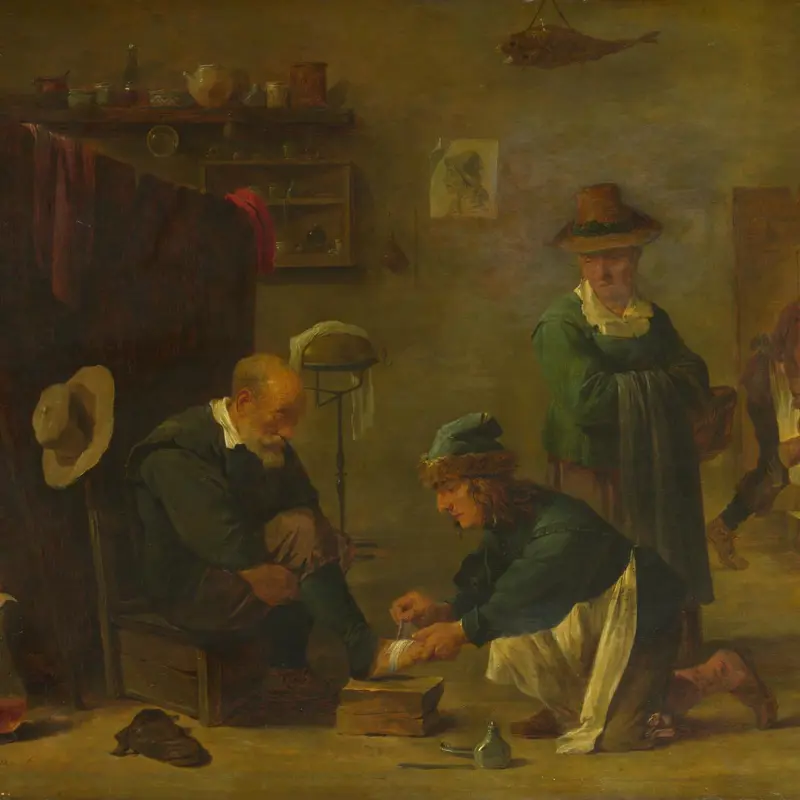Probably by David Teniers the Younger, 'Backgammon Players', probably 1640-5
About the work
Overview
Backgammon (triktrak in Dutch) was a highly popular board game in seventeenth-century Flanders, especially in taverns and drinking dens, where players would bet on the outcome. The white cube we see in the centre of the board is probably a doubling die, used to up the stakes. Gambling of this kind was often frowned upon – especially when associated, as here, with other vices such as drinking and smoking – and appears frequently in paintings of the time, often indicating moral degeneracy.
But while not entirely respectable, the game was considered by many to be a legitimate source of amusement. Here, Teniers has captured the tension at a critical moment of the game. Few counters are left on the board and the man on the right appears eager for his opponent, with the white counter, to cast the dice. All his black counters are stacked ready to be cleared – with the right throw he will be able to claim victory.
The scene in front of the hearth in the background on the right reappears in Teniers’ Christ Crowned with Thorns, also in the National Gallery’s collection.
Key facts
Details
- Full title
- Backgammon Players
- Artist
- Probably by David Teniers the Younger
- Artist dates
- 1610 - 1690
- Date made
- probably 1640-5
- Medium and support
- oil on wood
- Dimensions
- 37.5 × 56.7 cm
- Acquisition credit
- Bequeathed by Lord Colborne, 1854
- Inventory number
- NG242
- Location
- Not on display
- Collection
- Main Collection
- Previous owners
Provenance
Additional information
Text extracted from the ‘Provenance’ section of the catalogue entry in Gregory Martin, ‘National Gallery Catalogues: The Flemish School: circa 1600–circa 1900’, London 1986; for further information, see the full catalogue entry.
Bibliography
-
1842J. Smith, Supplement to the: A Catalogue Raisonné of the Works of the Most Eminent Dutch, Flemish, and French Painters: In Which is Included a Short Biographical Notice of the Artists, with a Copious Description of Their Principal Pictures […], vol. 9, London 1842
-
1848British Institution, Catalogue of Pictures by Italian, Flemish, Dutch, French and English Masters (exh. cat. British Institution, 1848), London 1848
-
1854G.F. Waagen, Treasures of Art in Great Britain: Being and Account of the Chief Collections of Paintings, Drawings, Sculptures, Illuminated Mss. […], vol. 2, trans. E. Eastlake, London 1854
-
1970G. Martin, The Flemish School, circa 1600-circa 1900, London 1970
-
1986Martin, Gregory, National Gallery Catalogues: The Flemish School, circa 1600 - circa 1900, London 1986
-
2001
C. Baker and T. Henry, The National Gallery: Complete Illustrated Catalogue, London 2001
About this record
If you know more about this work or have spotted an error, please contact us. Please note that exhibition histories are listed from 2009 onwards. Bibliographies may not be complete; more comprehensive information is available in the National Gallery Library.























